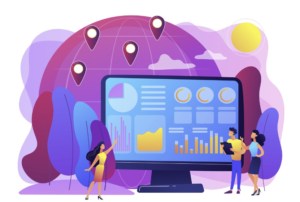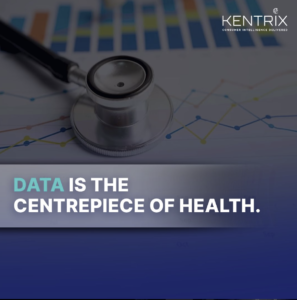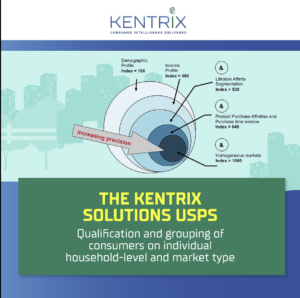In the rapidly evolving landscape of business intelligence (BI), staying ahead of the competition requires leveraging the most advanced tools available. As organizations seek to gain deeper insights from their data, the demand for powerful and user-friendly BI tools continues to grow. In this article, we will explore the top business intelligence tools for 2024 that are shaping the future of data analytics and decision-making.

1. Microsoft Power BI
Microsoft Power BI remains a frontrunner in the BI landscape, offering a robust suite of tools designed to transform raw data into meaningful insights. With its user-friendly interface, seamless integration with other Microsoft products, and a strong community of users and developers, Power BI is a top choice for businesses of all sizes.
Key Features:
- Interactive Dashboards: Create visually compelling dashboards that provide real-time insights.
- Natural Language Querying: Users can ask questions in natural language and get instant answers.
- AI-Powered Analytics: Leverage AI capabilities to uncover hidden patterns and trends in your data.
- Custom Visualizations: Build custom visualizations to meet specific business needs.
2. Tableau
Tableau is renowned for its powerful data visualization capabilities, enabling users to create stunning and interactive visual representations of their data. Tableau’s flexibility and ease of use make it a favorite among data analysts and business users alike.
Key Features:
- Drag-and-Drop Interface: Easily create complex visualizations without the need for coding.
- Data Blending: Combine data from multiple sources to create comprehensive views.
- Real-Time Analytics: Analyze data in real-time for timely decision-making.
- Extensive Community and Resources: Benefit from a large community of users and extensive online resources.
3. Qlik Sense
Qlik Sense is a self-service BI tool that empowers users to create their own reports and dashboards. Its associative data model allows users to explore data freely and uncover insights that might be missed with traditional query-based tools.
Key Features:
- Associative Data Model: Explore data in any direction without predefined queries.
- Self-Service Data Preparation: Users can prepare and load data without needing IT assistance.
- Smart Visualizations: Automatically suggest the best visualization based on the data selected.
- Scalability: Suitable for both small businesses and large enterprises.
4. SAS Business Intelligence
SAS Business Intelligence provides a comprehensive suite of BI tools that support data mining, predictive analytics, and advanced reporting. Known for its robust analytics capabilities, SAS is ideal for organizations that require deep data analysis and statistical insights.
Key Features:
- Advanced Analytics: Perform complex data analysis and predictive modeling.
- Integrated Data Management: Seamlessly integrate data from various sources.
- Customizable Dashboards: Create personalized dashboards tailored to specific business needs.
- Collaboration Tools: Share insights and collaborate with team members easily.
Also Read: Benefits of Real-Time Consumer Data Analysis
5. Looker
Looker, now part of Google Cloud, offers a modern approach to BI with its powerful data exploration and visualization capabilities. Looker’s unique data modeling language, LookML, allows users to define metrics and dimensions that can be reused across the organization.
Key Features:
- LookML: Define reusable data models that ensure consistency across reports.
- Embedded Analytics: Embed Looker’s analytics into other applications and workflows.
- BigQuery Integration: Leverage the power of Google BigQuery for large-scale data analysis.
- Collaborative Workspaces: Enable teams to collaborate on data exploration and insights.
6. Domo
Domo is a cloud-based BI platform that offers a wide range of tools for data integration, visualization, and collaboration. Domo’s focus on ease of use and accessibility makes it a popular choice for businesses looking to democratize data across their organization.
Key Features:
- Cloud-Based: Access your data and insights from anywhere, at any time.
- App Marketplace: Integrate with a variety of apps to extend functionality.
- Real-Time Data: Monitor your business with real-time data updates.
- Collaboration Features: Share insights and collaborate on data projects with ease.

7. Sisense
Sisense is known for its ability to handle large and complex datasets with ease. Its in-chip technology accelerates data processing and analytics, making it possible to analyze massive amounts of data quickly.
Key Features:
- In-Chip Technology: Faster data processing and query performance.
- Customizable Dashboards: Create highly customizable and interactive dashboards.
- Extensive API Support: Integrate Sisense with other tools and platforms.
- Scalable Architecture: Suitable for handling big data and large-scale analytics.
8. SAP BusinessObjects
SAP BusinessObjects offers a comprehensive BI suite that includes tools for reporting, data visualization, and predictive analytics. As part of the SAP ecosystem, it integrates seamlessly with other SAP applications and systems.
Key Features:
- Enterprise Reporting: Generate detailed and customizable reports for various business needs.
- Predictive Analytics: Utilize advanced analytics to forecast trends and outcomes.
- Integration with SAP: Leverage data from other SAP applications and systems.
- Role-Based Dashboards: Tailor dashboards to specific user roles and requirements.
9. MicroStrategy
MicroStrategy is a powerful BI tool known for its scalability and enterprise-grade analytics capabilities. It offers a wide range of features, from data discovery and visualization to mobile analytics and hyperintelligence.
Key Features:
- HyperIntelligence: Embed insights directly into applications, websites, and devices.
- Mobile Analytics: Access and analyze data on the go with mobile apps.
- Enterprise Scalability: Handle large volumes of data and support thousands of users.
- Advanced Analytics: Perform sophisticated data analysis and predictive modeling.
10. IBM Cognos Analytics
IBM Cognos Analytics combines AI-driven analytics with a user-friendly interface, making it a powerful tool for both business users and data professionals. Its integration with IBM’s Watson AI provides advanced capabilities for data analysis and visualization.
Key Features:
- AI-Powered Insights: Leverage AI to uncover hidden insights and trends.
- Data Visualization: Create interactive and engaging visualizations.
- Natural Language Processing: Use natural language queries to explore data.
- Comprehensive Reporting: Generate detailed and actionable reports for various business functions.
Also Read: India Consumer Affluence: A Comprehensive Analysis
Conclusion
In 2024, the landscape of business intelligence tools continues to evolve, driven by advancements in AI, machine learning, and data integration capabilities. The tools highlighted in this article—Microsoft Power BI, Tableau, Qlik Sense, SAS Business Intelligence, Looker, Domo, Sisense, SAP BusinessObjects, MicroStrategy, and IBM Cognos Analytics—represent the forefront of innovation in the BI space. Each of these tools offers unique features and capabilities that can help organizations unlock the full potential of their data, drive strategic decision-making, and maintain a competitive edge in their respective industries.
Choosing the right BI tool depends on specific business needs, data requirements, and user preferences. By carefully evaluating the features and benefits of each tool, businesses can make informed decisions that will enhance their data analytics capabilities and support their growth objectives in the coming year.













